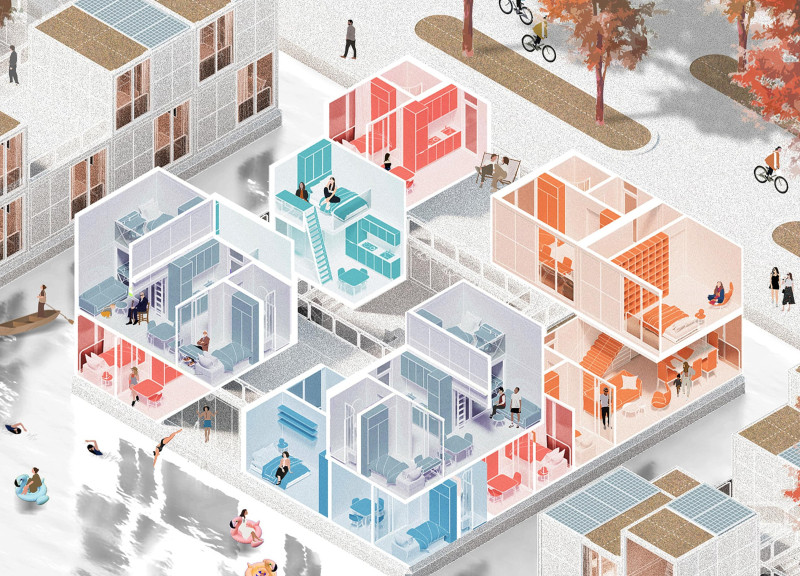5 key facts about this project
The "HIDDEN DIMENSION" project addresses the urgent need for affordable housing in Toronto, a city where the population is growing rapidly and the demand for housing is high. Situated on the edge of Lake Ontario, the design introduces floating housing blocks that creatively use the waterfront. This concept not only provides a solution to the limited availability of land for development but also connects residents with the natural environment, enhancing their living experience.
Design Concept
At the heart of the design are floating housing units, which consist of two distinct sections: an upper living area and a basement for communal functions. This arrangement promotes efficient use of space while allowing for both privacy and community engagement. The layout is carefully oriented to maximize views of the lake, encouraging residents to engage with the waterfront and enjoy outdoor recreational opportunities.
Materiality
The project emphasizes sustainability through its choice of materials. Key components include solar systems, green roofs, cement, waterproof damp-proofing, rigid insulation, and various timber elements. These materials are deliberately selected for their durability and energy efficiency. Solar panels supply renewable energy, while the heating system utilizes water from the lake, reflecting a commitment to environmentally friendly practices in housing design.
Community Integration
The development takes a phased approach, progressing from a neighborhood to a village and eventually fostering a cohesive community. This gradual development is designed to encourage social interaction among residents, creating spaces that invite people to connect. Both shared and private areas are prioritized, accommodating diverse living needs in an urban setting.
With its thoughtful design, the "HIDDEN DIMENSION" offers an improved quality of life for residents while respecting the surrounding environment. The floating units provide a unique residential experience, where people can enjoy peaceful views of the lake. The sense of living on water creates an atmosphere that is both calming and connected to nature, making it an innovative response to the challenges of modern urban living.



















































